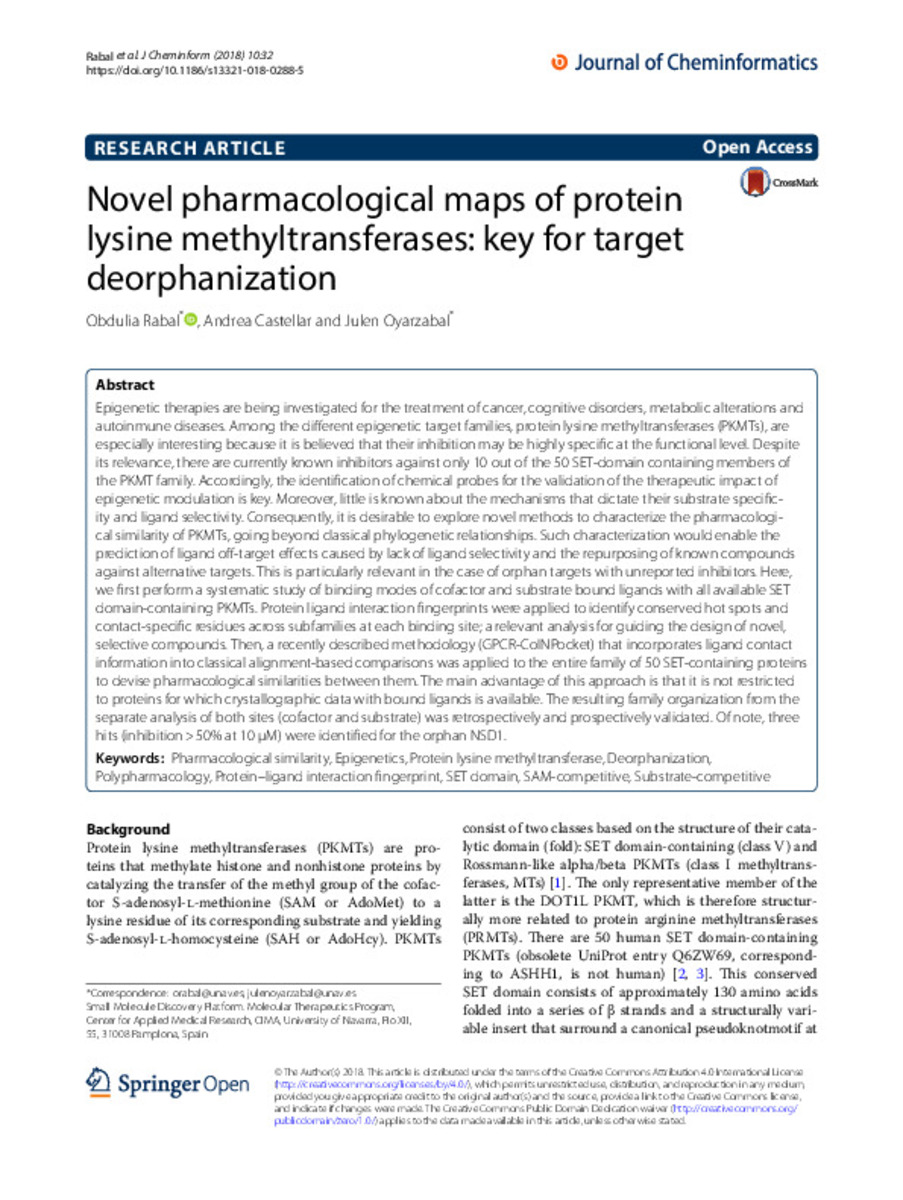Novel pharmacological maps of protein lysine methyltransferases: key for target deorphanization
Palabras clave :
Pharmacological similarity
Epigenetics
Protein lysine methyltransferase
Deorphanization
Polypharmacology
Protein–ligand interaction fngerprint
SET domain
SAM-competitive
Substrate-competitive
Fecha de publicación :
2018
Editorial :
BioMed Central
Nota:
This article is distributed under the terms of the Creative Commons Attribution 4.0 International License (http://creativecommons.org/licenses/by/4.0/), which permits unrestricted use, distribution, and reproduction in any medium, provided you give appropriate credit to the original author(s) and the source, provide a link to the Creative Commons license, and indicate if changes were made. The Creative Commons Public Domain Dedication waiver (http://creativecommons.org/publicdomain/zero/1.0/) applies to the data made available in this article, unless otherwise stated.
Cita:
Rabal, O. (Obdulia); Castellar, A. (Andrea); Oyarzabal, J. (Julen). "Novel pharmacological maps of protein lysine methyltransferases: key for target deorphanization". Journal of cheminformatics. 10 (32), 2018,
Aparece en las colecciones:
Estadísticas e impacto
0 citas en

0 citas en

Los ítems de Dadun están protegidos por copyright, con todos los derechos reservados, a menos que se indique lo contrario.







